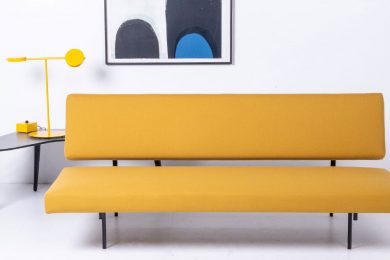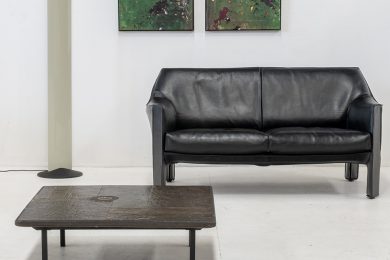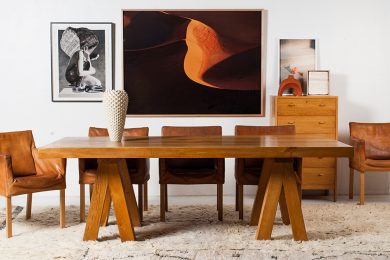A Prolific Partnership: How Pastoe and Cees Braakman Pioneered Dutch Modernism
Dutch design of the 20th Century has a unique trajectory - from the post-war utilitarian furniture that sat firmly within the context of industrial production, to the more widespread use of timber and organic forms embraced later. It’s an evolution that tells the story of changing times and social tendencies, as the likes of Pastoe and Cees Braakman responded to the needs and desires of the design-loving Dutch.
By Millie Thwaites
Some of the most influential and innovative ideas to arise from the Dutch Design Movement can be attributed to iconic manufacturer Pastoe. Since their humble beginnings in Utrecht in 1913, they’ve pioneered design throughout The Netherlands, staying ahead of the curve through constant innovation and an open mind. Their motto, The Art of Storage, perfectly encapsulates their ethos; they believed - and still do - in making beautiful, functional storage to enrich the life of the consumer.
Braakman worked with Pastoe for 30 years and the pieces they produced together play a huge part in defining what we now know to be Dutch Modernism.”
Deeply ingrained in Dutch design, Pastoe was one of the first Dutch companies to embrace a minimalist aesthetic and austere materials such as steel. The reaction was far from ideal and uptake was slow. However, Pastoe remained committed to their vision, and pushed ahead in a modernist direction.
This was only reinforced in 1948 when young designer Cees Braakman (whose father D. L. Braakman was previously the head draftsperson and manager of Pastoe) took the reins. He stayed with the company for 30 years and the pieces they produced together play a huge part in defining what we now know to be Dutch Modernism.
One year before taking on the lead role at Pastoe, Braakman visited the United States to gain an insight into American manufacturing techniques and processes. Here, he fell in love with the work of Charles and Ray Eames (in particular, their curved plywood furniture), and the Herman Miller Company. The influence these figures had on Braakman’s approach is tangible; soon after returning to The Netherlands, he designed Pastoe’s first line of modern furniture and convinced Pastoe to explore similar production methods. Braakman’s following collections were marked by clean lines and a sense of proportion tailored to smaller living spaces seen throughout The Netherlands.
There were various collections and concepts that still define the work between Pastoe and Braakman. With flexibility and accessibility front of mind, Braakman created the Oak Series and Birch Series in 1948 and 1950 respectively. These were designed around geometric cupboards that the customer could move around to create their desired size and configuration.
With a stronger, emerging focus on storage furniture, the company launched their Made to Measure cabinets in 1955 which allowed customers to choose from a variety of materials and self-assemble. This concept was unheard of at the time and offered a newfound flexibility, freedom and engagement for the end user. But there was nothing basic or rudimentary about this collection - in 1957, the teak version earned a silver medal at the 1957 Triennale in Milan and Le Signe d’Or in Belgium.
As well as the flexible cabinet systems, Pastoe produced cabinets more conventional in their style, such as the Japanese Series - which is still highly regarded and sought after for its superior details - and sideboards such as the A’dammer sideboard by Aldo van den Nieuwelaar.
The world of Dutch design is rich in historical anecdotes, a true appreciation for clever thinking, and high quality details. We’re captivated; our warehouse team has been lovingly restoring key vintage Dutch pieces and sharing their invaluable knowledge about this fascinating era. Get on board: learn more about Dutch Modernism on the journal, and shop our range of Pastoe pieces online.
The world of Dutch design is rich in historical anecdotes, a true appreciation for clever thinking, and high quality details.”
Archive images via Yatzer.



